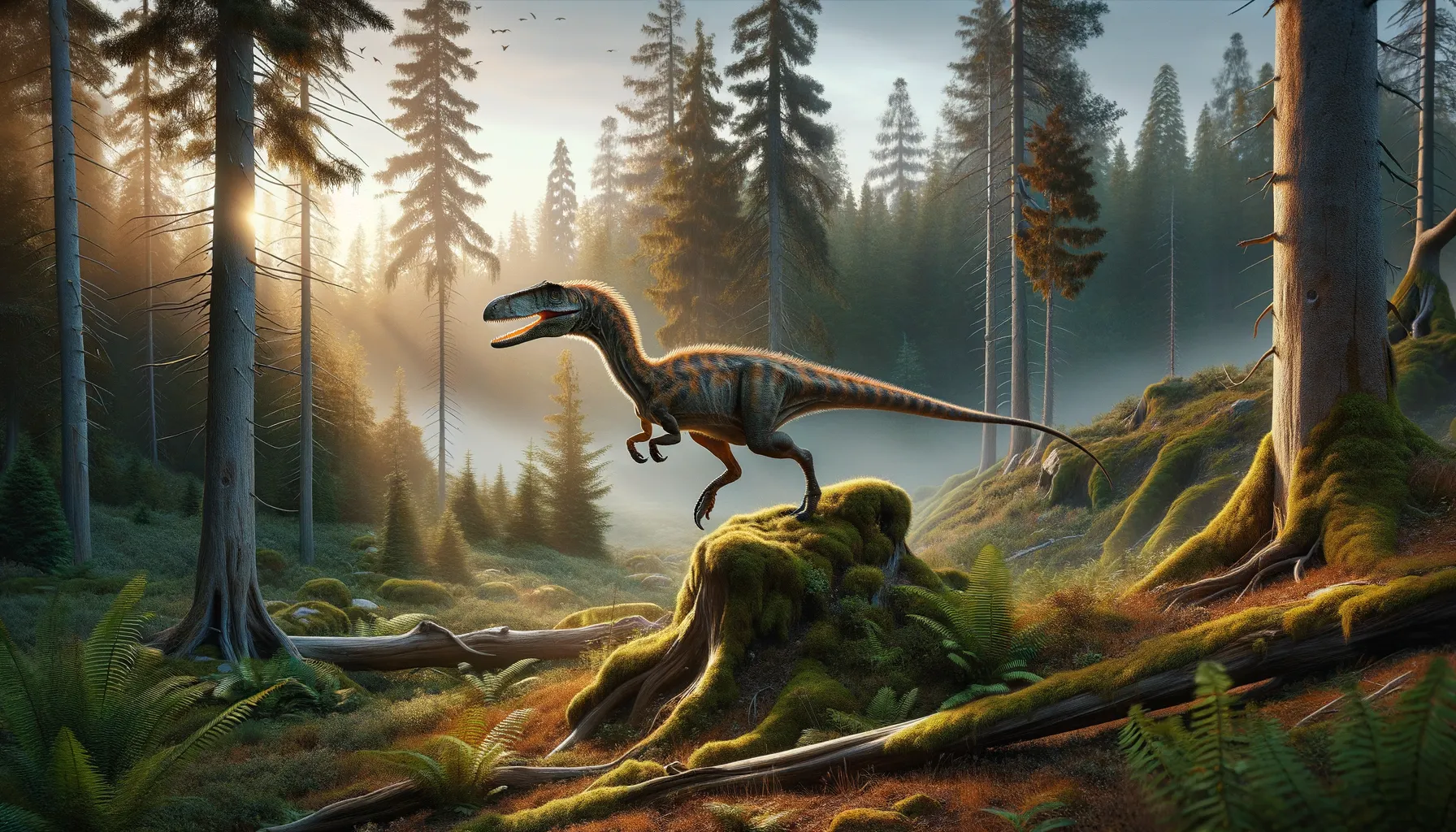
Kileskus
Discover the agile hunters of ancient Siberia.
Period
Jurassic
Length
Roughly 2 meters in length.
Height
Approximately 0.5 to 1 meters tall.
Weight
Estimated to weigh around 15-20 kilograms.
Kileskus was a small theropod dinosaur that roamed the Earth during the Middle Jurassic period. Its discovery in what is now Siberia provides significant insights into the evolutionary lineage leading to birds. This dinosaur had a slender body, indicative of its agility and predatory lifestyle. Being one of the earlier representatives of its group, Kileskus showcases important traits that link the small theropods to the avian dinosaurs, thereby enhancing our understanding of this fascinating transition.
Diet
Kileskus was carnivorous, feeding on small animals and possibly insects. Its diet may have included small vertebrates and invertebrates, providing necessary protein for its predatory lifestyle.
Hunting
Kileskus likely employed quick, agile movements to capture its prey, using its speed to its advantage. Its sharp teeth suggest it was well-equipped for hunting small, elusive animals.
Environmental challenges
Living in the Jurassic period, Kileskus faced a world dominated by larger predators. Adapting its speed and agility was crucial for survival. Climate fluctuations also posed challenges, requiring constant adaptation to varying conditions. Its small size might have provided some advantages in navigating dense vegetation and hiding from threats.
Speed
Likely medium-paced, suitable for short sprints.
Lifespan
Likely lived for several years, typical of small theropods.
First discovery
First discovered in Siberia, Russia in 2010.
Fun Facts
- Kileskus was a small, early theropod dinosaur that lived around 165 million years ago during the Middle Jurassic period.
- The name 'Kileskus' means 'Lizard King' in Russian, reflecting its discovery in Russia.
- Kileskus is known primarily from partial skeletons found in the Sharypovo District of Russia.
- It was a swift predator, likely preying on small animals and insects in its environment.
- Kileskus is considered an early relative of the much later and more famous theropods like Tyrannosaurus rex.
- Though not very large, Kileskus had sharp teeth and claws, suggesting it was an adept hunter.
- Studying Kileskus helps paleontologists understand the early evolution and diversification of theropod dinosaurs.
Growth and Development
Kileskus, like other theropods, likely underwent rapid growth during juvenile stages. Development involved increasing bone density and muscle mass for better predatory capabilities. This quick maturation would have been essential to reach reproductive age and ensure species continuation. The energy-intensive phase of growth required a steady supply of nutrients from its diet.
Habitat
Kileskus inhabited forested areas with access to open spaces for hunting. The rich Jurassic ecosystem provided ample prey and conditions for thriving populations. It relied on dense vegetation for concealment from larger predators. Such environments also supported a diverse array of prey species, critical for its survival.
Interaction with other species
Kileskus coexisted with various vertebrates and probably avoided larger theropods. Symbiosis or competition with other small dinosaurs and creatures might have influenced its behavior and survival strategies. Its interactions were shaped by the need to maintain ecological balance within its environment.
Natural lifespan
Its natural lifespan was probably around 10 to 15 years.
Reproduction
Kileskus, like many theropods, probably laid eggs in secure nests. Parental care may have included guarding the eggs from predators or environmental hazards. Seasonal breeding patterns ensured the young hatched during optimal times for survival.
Social behaviour
Kileskus might have been solitary or formed small groups for hunting. Social structures could have revolved around family units or temporary alliances. Communication would have been key, possibly involving vocalizations or visual signals.
Fossil locations
Fossils have been primarily found in Siberia, Russia, offering insights into the area’s Jurassic ecosystem. These discoveries are crucial for understanding the distribution of theropods during this period. Fossilized remains include key skeletal structures that help depict its physical form and evolutionary significance.
